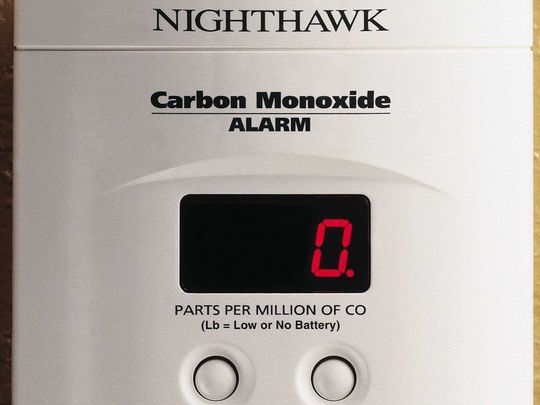Minimize the Risk of Carbon Monoxide Exposure This Winter
Sources of Carbon Monoxide
Carbon monoxide is produced as a byproduct of the combustion of fossil and organic fuels. Unfortunately, these represent the vast majority of fuels that are used for heating and cooking. Fumes from vehicle exhausts also contain potentially lethal amounts of carbon monoxide. Keep in mind that natural gas, coal, wood, kerosene and gasoline all produce carbon monoxide.
The Danger
Carbon monoxide is present in most heated buildings as well as vehicles. However, the concentration of this gas under normal circumstances is minimal and doesn’t pose a health risk. The threat emerges as high concentrations of the gas enter an enclosed space. This is why suicides caused by people running their vehicles in a closed garage is particularly effective.
It is not uncommon for heaters that are not properly maintained, clogged chimneys, vents, fireplaces and stoves to produce toxic levels of carbon monoxide. Any leaks, clogs or other forms of blockage as well as improperly calibrated equipment that regulates burning in stoves or furnaces can all enhance the risk of producing elevated levels of this toxic gas.
This is why it’s so important to have these and other items cleaned and serviced in the fall, before they are used on a regular basis in enclosed spaces. It is also important to purchase and properly maintain a good carbon monoxide detector that will sound an alarm if levels increase to dangerous amounts.
Symptoms of Exposure
Carbon monoxide exposure reduces cognition and levels of consciousness. It may begin as a low-grade headache and a sense of fatigue. However, motor skill impairment, respiratory problems, movements in and out of consciousness, coma and death can occur with continual exposure. Children and the elderly are also particularly at risk.
One of the biggest dangers associated with carbon monoxide exposure is that people don’t know they are in danger until it’s too late. The symptoms of grogginess and a need to sleep or take a nap can cloud judgment because they seem so natural. Unfortunately, sleep is also a danger because most accidental deaths do to exposure occur in the night time when concentrations are the highest. People simply drift off to sleep and never wake up.
Prevention
Preventing exposure is simple. Keep equipment in good condition and never use any fuel-burning heating device in an enclosed space if they do not have a proper exhaust system. Make sure that chimneys and vents are cleaned and that exhaust pipes are not leaking. Pay particular attention to vehicle exhaust systems. Fumes from cracks can enter the driving and passenger compartment, and people can be exposed even if they are simply sitting in an unsafe vehicle.
Always provide ample ventilation in rooms in which makeshift heating devices are used. This may reduce the ability to keep a room warm, but it will also reduce the chances of becoming incapacitated from carbon monoxide exposure. Never use a gas oven or stove to provide heat inside of a home either, because carbon monoxide levels increase with time. By the time a room is warm, levels can be dangerously high.
Finally, make sure that you immediately leave a room that you feel may contain high levels of carbon monoxide. Fresh air is the best and easiest way to offset many of the effects of exposure. Open windows and doors and go outside and seek shelter and warmth somewhere else. Keep detectors upstairs or near sleeping and living areas, and have an exit strategy in place if you need to evacuate.
Taking these simple steps and being aware of the symptoms of carbon monoxide exposure can save lives. Make sure that you prepare your home and use caution while searching for sources of heat during the upcoming cold weather months.

